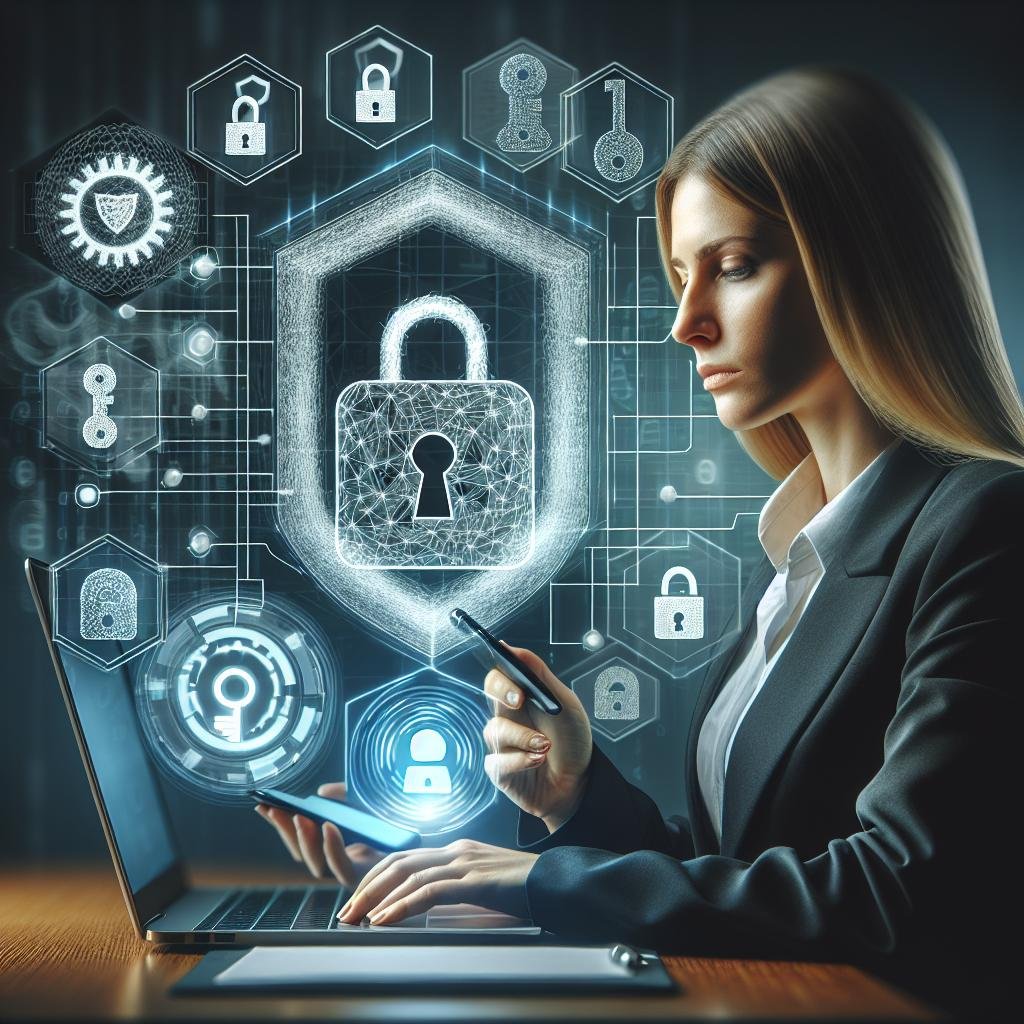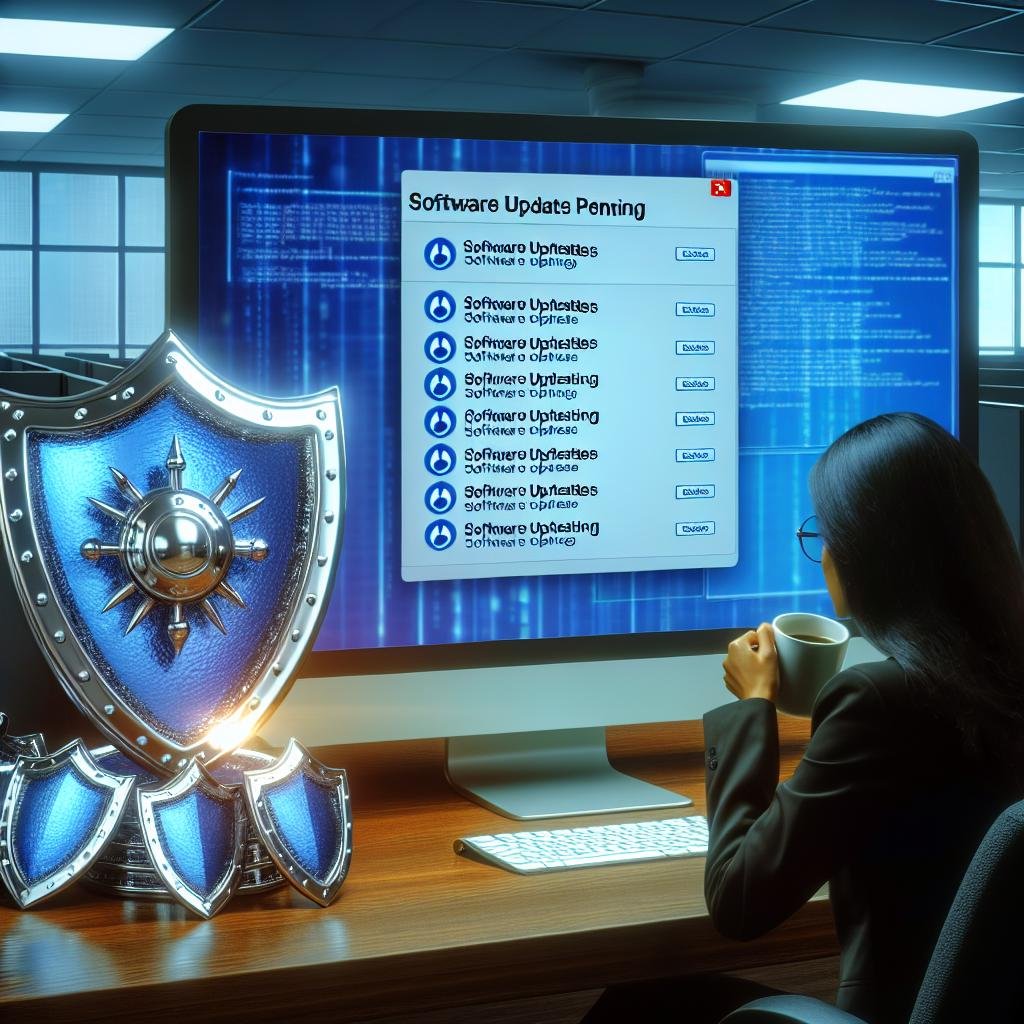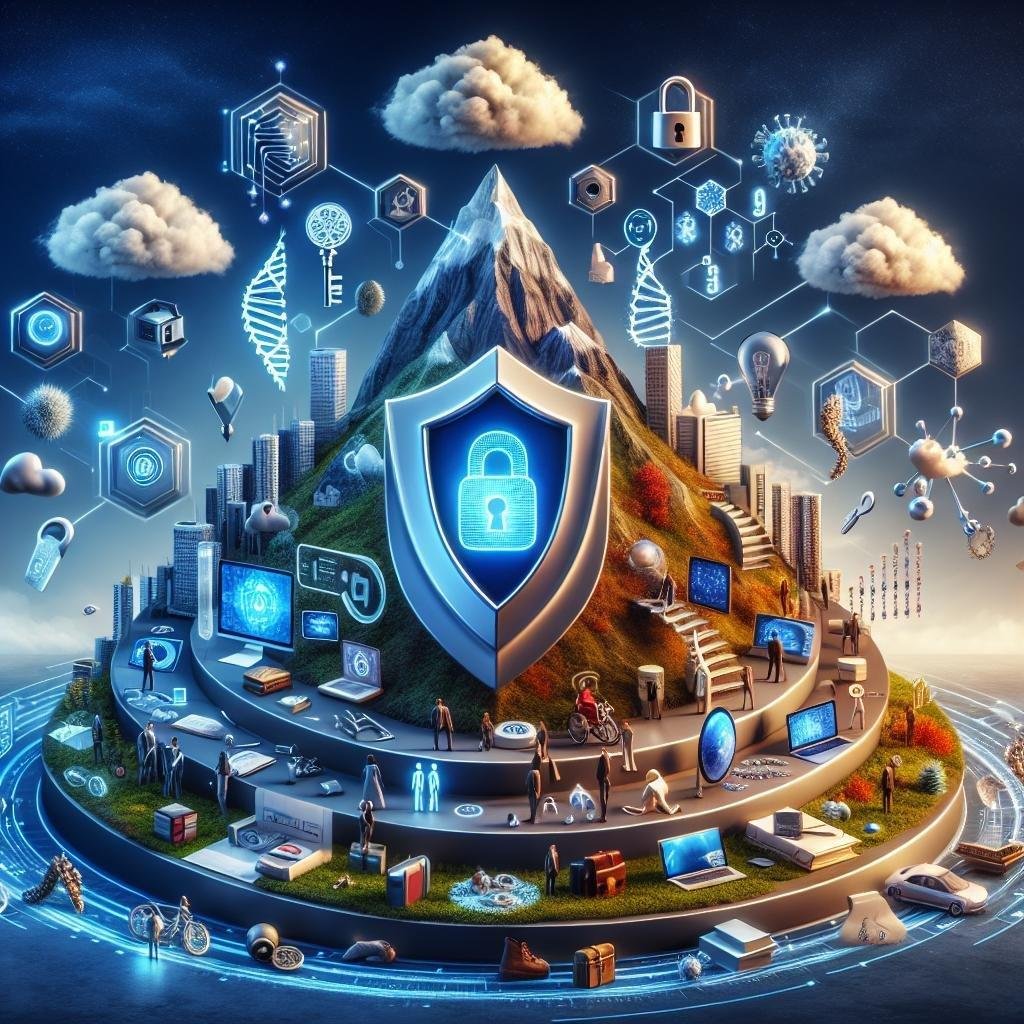In an increasingly digital world, where our lives are intricately woven into the fabric of the internet, the protection of personal data has never been more crucial. Each click, swipe, and tap can reveal personal information, making us vulnerable to a myriad of cybersecurity threats. From identity theft to data breaches, the risks are omnipresent and constantly evolving. As we navigate through this complex landscape, understanding how to safeguard our sensitive information becomes not just a necessity, but a vital skill. In this article, we will explore the best ways to shield your personal data from cyber threats, equipping you with practical strategies and insightful knowledge to enhance your digital security. Join us on this journey to fortify your online presence and reclaim your peace of mind in a world where caution is the new norm.
Understanding the Landscape of Cybersecurity Threats
In today’s digital age, understanding the diverse range of cybersecurity threats is essential for protecting your personal data. Threats can come in various forms, from sophisticated attacks like ransomware to common, more straightforward schemes such as phishing. As technology evolves, so do the methods employed by cybercriminals. This landscape is constantly shifting, necessitating an awareness of the latest strategies attackers may use to exploit vulnerabilities. By being informed about these potential dangers, individuals can better prepare and implement effective countermeasures.
Some of the most prevalent cybersecurity threats include:
- Malware: Malicious software designed to harm or exploit devices.
- Social Engineering: Manipulating individuals into revealing confidential information through psychological means.
- DDoS Attacks: Overwhelming a network with traffic to render it unusable.
- Data Breaches: Unauthorized access and retrieval of sensitive information.
Understanding these threats is the first step in safeguarding your data. Implementing defenses such as regular software updates, strong password practices, and the use of reliable antivirus programs can significantly reduce your risk. Furthermore, fostering a culture of awareness and vigilance in digital interactions not only protects personal data but also contributes to the greater good of cybersecurity in society.

Building Strong Passwords and Utilizing Multi-Factor Authentication
In the digital era, a strong password is your primary line of defense against unauthorized access to your personal information. To create an effective password, consider the following best practices:
- Use a combination of uppercase and lowercase letters, numbers, and symbols
- Avoid easily guessable information like birthdays or names
- Make it at least 12 characters long
- Utilize passphrases—longer phrases that are easier to remember
Instead of recycling old passwords, use a password manager to generate and store unique passwords for each of your accounts. This ensures that even if one password is compromised, your other accounts remain secure.
To further bolstering your security, adopting multi-factor authentication (MFA) is essential. MFA adds an extra layer of protection by requiring a second form of verification in addition to your password. Common methods include:
- Text messages or email codes
- Authenticator apps that generate time-sensitive codes
- Biometric verification, such as fingerprints or facial recognition
Implementing MFA significantly reduces the risk of unauthorized access, even if your password is leaked. Always opt for services that offer this feature and make it a standard practice in your online security toolkit.

The Importance of Regular Software Updates and Security Patches
In today’s digital landscape, maintaining the integrity of your personal data hinges significantly on keeping your software up to date. Regular software updates help patch vulnerabilities that cybercriminals may exploit. By neglecting these updates, you leave the door open for potential breaches that could compromise not only your data but also your peace of mind. Software developers continually refine their programs to enhance functionality and bolster security measures, making it critical for users to adopt a proactive approach to updates.
Equally important are security patches, which provide immediate fixes in response to discovered weaknesses. Ignoring these patches can be akin to sailing a ship with a leak—eventually, the damage will catch up. To reinforce your protection strategy, consider enabling automatic updates where possible, as this ensures that you’ll receive the latest security features promptly. Additionally, follow these best practices for safeguarding your data:
- Enable Firewalls: Activate built-in firewall settings to monitor incoming and outgoing traffic.
- Use Strong Passwords: Incorporate complex passwords and change them regularly.
- Back Up Data: Regularly back up your data to safeguard against loss.
- Educate Yourself: Stay informed about the latest cybersecurity threats and prevention techniques.

Practicing Safe Browsing and Being Wary of Public Wi-Fi
In today’s digital age, maintaining the security of your personal information while browsing the web is more critical than ever. Frequenting public Wi-Fi networks—like those found in cafes, airports, and libraries—opens the door to various cybersecurity threats. These unsecured connections can easily be exploited by cybercriminals, allowing them to intercept sensitive information. To safeguard your personal data, consider the following practices:
- Use a VPN: A Virtual Private Network encrypts your internet traffic, making it much harder for hackers to access your data.
- Verify network legitimacy: Always double-check the Wi-Fi network name before connecting to avoid phantom networks designed to trap unsuspecting users.
- Use HTTPS: Ensure that you are browsing sites that start with “https://” as this indicates they are secured with SSL encryption.
- Avoid sensitive transactions: Refrain from logging into bank accounts or entering personal information while on public Wi-Fi.
Additionally, ensure that your device is equipped with the latest security updates and antivirus software. Regularly updating your software not only enhances device performance but also fortifies your defenses against potential vulnerabilities. Make it a habit to forget the network after usage, minimizing the risk of automatic reconnections to compromised connections. Being proactive and informed can significantly reduce the chances of falling victim to cyber threats in an increasingly connected world.
Q&A
Q&A: Best Ways to Protect Your Personal Data from Cybersecurity Threats
Q1: What are the primary threats to my personal data in today’s digital world?
A1: The digital landscape is fraught with potential dangers. Some of the most common threats include phishing attacks, where cybercriminals trick you into revealing sensitive information; malware, which can infiltrate your devices and harvest data; and data breaches, often stemming from unprotected databases. Additionally, Wi-Fi vulnerabilities can put your personal details at risk if you’re not cautious about the networks you connect to.
Q2: How can I recognize a phishing attempt?
A2: Phishing attempts often masquerade as legitimate emails or messages. Look for red flags such as generic greetings, urgent requests, suspicious links, and awkward grammar. If a message creates a sense of urgency or asks for personal information, pause and verify its authenticity before taking any action.
Q3: Why is using strong, unique passwords important, and how can I manage them?
A3: Strong, unique passwords act as your first line of defense against unauthorized access. A complex password is more difficult for hackers to crack. To manage them, consider using a password manager, which can securely store and generate passwords for you, ensuring that every account has a different, robust password without the mental burden of remembering them all.
Q4: What role does two-factor authentication (2FA) play in protecting my data?
A4: Two-factor authentication adds an extra layer of security by requiring not just a password but also a second form of verification, such as a text message code or a fingerprint scan. This means that even if someone gains access to your password, they still need that second piece of information to compromise your account, significantly reducing the risk of unauthorized access.
Q5: How can I secure my devices against malware?
A5: To safeguard against malware, ensure that all your devices have up-to-date antivirus software. Regularly installing the latest security updates and patches is crucial as they address vulnerabilities that could be exploited by malware. Additionally, avoid downloading software or clicking on links from unknown sources, and consider enabling a firewall for added protection.
Q6: What are some best practices for browsing the internet securely?
A6: Start by using reputable and secure browsers that focus on privacy. Always be cautious when entering personal information online and look for HTTPS in the URL, which indicates a secure connection. Using a virtual private network (VPN) can add another layer of anonymity while browsing, especially on public Wi-Fi networks.
Q7: How can I protect my data on social media?
A7: Be mindful of the information you share publicly on social media platforms. Review your privacy settings regularly and limit the visibility of your posts to trusted friends or family. Consider disabling location tagging and refrain from sharing sensitive personal information that could be exploited by cybercriminals.
Q8: Are there steps I can take to secure my home Wi-Fi network?
A8: Absolutely! Start by changing the default username and password of your router to something more secure. Use WPA3 encryption if available, and regularly update your router’s firmware. Consider activating a guest network for visitors and historically limiting access to your main network.
Q9: What should I do in the event that my data is compromised?
A9: If you suspect a data breach, immediately change your passwords and enable two-factor authentication on affected accounts. Notify your financial institutions if sensitive information such as bank details has been compromised. Monitor your accounts for suspicious activity and consider enrolling in identity theft protection services for peace of mind.
Q10: Is it possible to be completely safe from cybersecurity threats?
A10: While it’s practically impossible to be entirely free from cybersecurity threats, you can significantly reduce your risk by following best practices. Staying informed about the latest threats, employing security-enhancing tools, and adopting a proactive approach to your digital life will put you in the best position to protect your personal data.
By following these strategies and remaining vigilant, you can enjoy your digital experiences with greater security and peace of mind!
In Summary
In an increasingly connected world, safeguarding your personal data has never been more crucial. By adopting a multifaceted approach to cybersecurity—embracing strong passwords, enabling two-factor authentication, and staying informed about the latest threats—you can significantly diminish the risks you face online. Ultimately, protecting your personal data is not just about employing the right tools; it’s about cultivating a mindset of vigilance and awareness. As technology continues to evolve, so too must our strategies to stay one step ahead of cybercriminals. Remember, while the internet can be a minefield, with informed choices and proactive measures, you can navigate it safely and securely. Stay alert, stay informed, and take control of your digital life—because when it comes to your personal data, peace of mind is the ultimate goal.

